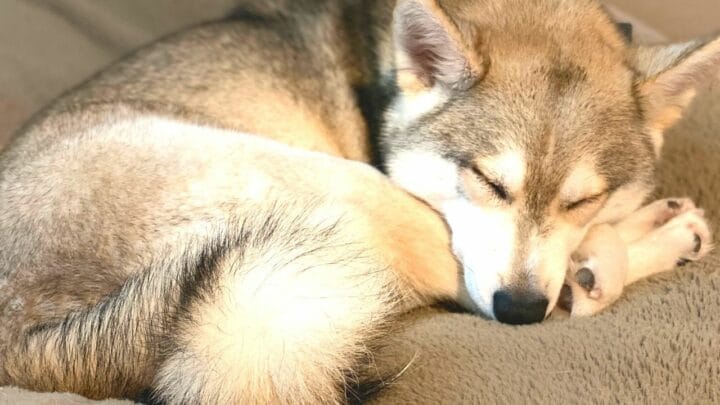Who wouldn’t recognize a Siberian Husky from a distance? With their wolfish appearance and temperament and striking blue eyes, it’s not hard to tell Huskies apart from the rest of the pack.
Typically, a purebred Siberian Husky is the closest look-alike of wolves in the wild. Though they can be tamer than that of their wild counterparts, taking care of them is no easy feat.
Siberian Huskies have the typical temperament of their wolf ancestors. Since they’re built for pulling sleds in their native land, they love to move around.
Yet, no matter how stubborn they get, people still choose to take care of one. Perhaps, their thick double coat, triangular ears, and color markings make Huskies adorable pets.
But, no matter what fur color they have, a Husky’s striking blue, almond-shaped eyes make them irresistible.
Despite all these reasons, the Siberian Husky isn’t a breed fit for all people. If you prefer to laze around the whole day, then you can kiss your Husky dreams goodbye.
But, is it even possible to adopt and take care of a dog that looks like a Husky, but in reality, isn’t one?
Well, you’re in for a treat. Please take a look at some canine breeds that are carbon copies of the famous breed but are in their own ways unique.
What dog breeds look like huskies?
1. Alaskan Malamute
2. German Shepherd
3. Alaskan Klee Kai
4. Saarloos Wolfdog
5. Canadian Eskimo Dog
6. Tamaskan
7. American Eskimo Dog
8. Icelandic Sheepdog
9. Swedish Vallhund
10. Akita Inu
11. Northern Inuit
12. Finnish Spitz
13. Czechoslovakian Wolfdog
14. Native American Indian Dog (NAID)
1. Alaskan Malamute
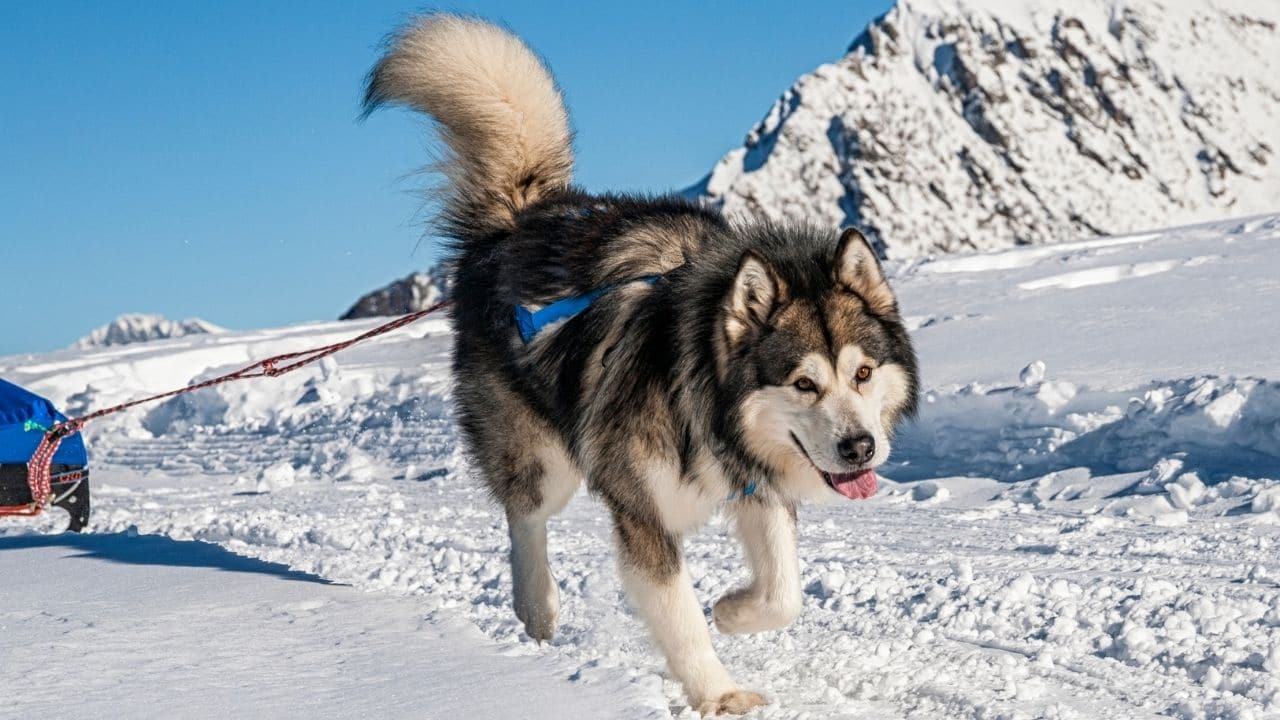
Garnering the 58th spot in the american kennel club’s most popular dog breeds, it’s no wonder an alaskan malamute’s part of this list.
Hailing from Alaska, it’s no surprise why these dogs were named as such. But, don’t you worry, as their thick coat makes them well-equipped to function in this freezing place.
Yet, their thick double coat’s not only functional, but it also affords them their mixed fur color. But, nothing can beat the lure of their almond-shaped brown eyes that hint us at their gentle nature.
Experts in the animal world would even describe these muscular Malamutes as loving, playful, and loyal.
Once they see their friends in danger, they’re more than willing to defend their pack.
Alaskan Malamutes even tone down their strength when interacting with young children.
Mind you, though. Malamutes may have a sweet temperament, but their muscular physique isn’t something you can ignore.
Since they’re commonly used as sled dogs, Malamutes can pull up objects twice their weight and size.
With that, it’s an understatement to say that our beloved Malamutes love being at work. Even when at play, Mals love running around the area.
Since they’re very active and athletic, it’s hard for this dog breed to stay still.
If you force them to stay in a restricted environment for prolonged periods, you’ll make them wreak havoc all over the place.
It’s like the Malamute’s taking revenge on you for not allowing it to go outside and have its much-needed stroll.
Hence, it’s always a good idea to take them for scheduled walks throughout the day. Even hiking is an enjoyable form of exercise for them.
If possible, bring them to places where they can use all their pent-up energy. Thus, dog experts recommend this dog breed if you’re more of the extrovert and adventurous type of person.
Also, since Malamutes generally take charge of their pack during sled rides, it’s not surprising for them to express this trait as well.
Think of them like strong-willed toddlers that will do everything to get what they want.
Mals are very intuitive canines. The moment they sense that you’re more of the pushover type, they won’t hesitate to lead you on their game.
Why they’re like this?
Well, for Malamutes, respect begets respect. If they respect you, they’ll acknowledge you as their leader. If not, then expect that they’ll make you follow them instead.
Thus, you’ll need to be firm with Mals at all times, especially during training.
If you can imbibe this feel when interacting with them, your life will be much easier.
So, if you manage to train a Malamute to become well-behaved, they’re such a joy to be with.
2. German Shepherd
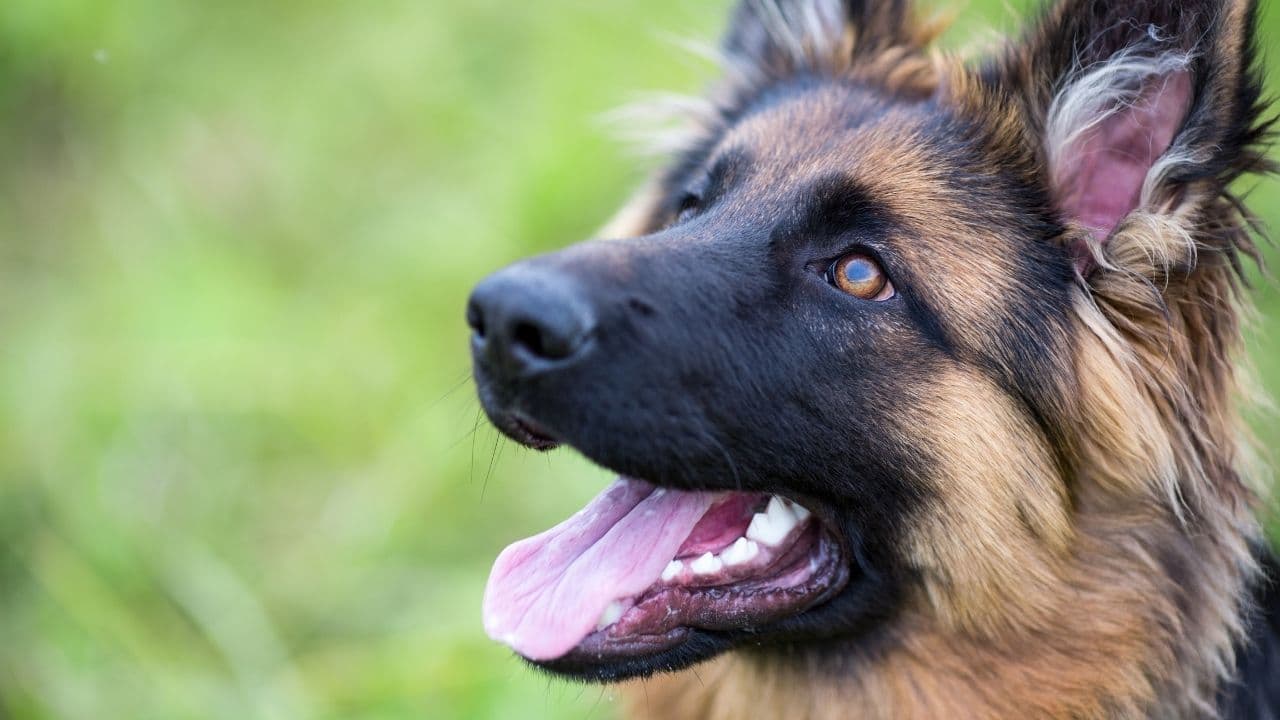
Second in the most popular siberian husky look-alike dog breeds is the German Shepherd.
Hailing from Germany, this breed became known in the locality as fierce protectors.
In fact, german shepherds work as herding canines, responsible for protecting sheep from predators.
With that in mind, they weren’t originally thought of as companion dogs. People want them because they need their help in making farm operations smooth.
Though German Shepherds don’t have the colorful fur like the Huskies, their muscular built will make you think it’s their darker version.
But, that view changed when more people got to take care of this canine.
Due to their fierce loyalty and exuding confidence, humans didn’t find it hard to welcome German Shepherds as companions.
But there’s a catch.
German Shepherds also need to maintain an active lifestyle if you don’t want them to become destructive.
Yet, with their easy-going nature, they’re more amenable to following commands. Hence, it’s easier for fur parents to train this dog breed as compared to the Huskies.
Even police use German Shepherds as police dogs. With their astute hearing and smell, training’s merely a cinch for them.
But, what makes German Shepherds an excellent family pet is their fierce protectiveness.
Once they sense danger nearby, these dogs won’t hesitate to put their lives on the line to save their fur family.
Thus, socializing German Shepherds as early as possible enables them to identify the bad guys from the good ones quickly.
Though they’ll initially stay aloof with strangers, it’ll only take a few tries before they start warming up.
Before you know it, the German Shepherd you’re taking care of won’t easily let you out of its sight for long.
3. Alaskan Klee Kai
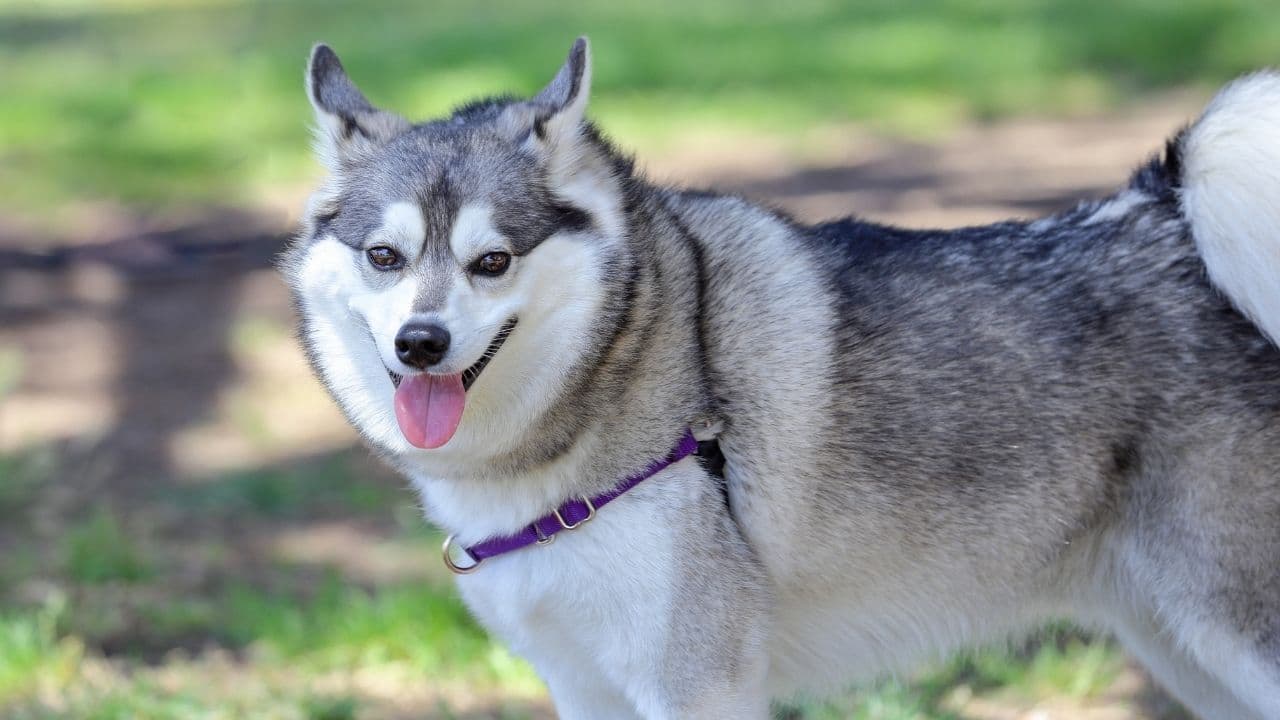
If you’re sold into the idea of taking care of a Husky less its muscular physique, then the alaskan klee kai is your best bet here.
Hailing as well from Alaska, these dogs have the same thick double coat and wolf-like characteristics as the Huskies.
Yet, no matter how this dog breed looks exactly like Huskies, Alaskan Klee Kais are much smaller in size.
In fact, the Inuits of Alaska coined the term for these dogs, which literally means “small dogs.” Think of them as the smaller version of their Siberian Husky counterparts.
Hence, you can’t expect Klee Kais to pull sleds twice their size as compared to Huskies.
Since they’re meant to become companion dogs, Klee Kais tend to have a calmer temperament than their big brothers.
Despite their more petite physique, Alaskan Klee Kais are also intelligent and easily trainable.
They can become fierce guard dogs as well if you want to make them your home protector.
Also, they have the same energetic spunk that Siberian Huskies have. Hence, it’s still a good idea to get these dogs lots of exercise through fun games and outdoor activities.
But, unlike Siberian Huskies, Klee Kais are less vocal. They won’t be as adamant as Huskies, but they’ll make their needs known through whining and barking.
Aside from their less vocal side, they also tend to be skittish around strangers.
That’s why you must socialize them early on to lessen their wariness around people you frequently interact with.
Other than that, they’re the perfect house pets for those who live in enclosed spaces like apartments.
Though they still shed a lot, grooming isn’t such a hassle for their fur parents than the Huskies.
But, just a word of caution, though. Since these canines have a high prey instinct, they may not be the best for those that house smaller animals and young children.
While there’s a chance they’ll get over this prey drive of theirs, it’s still best not to become too complacent.
4. Saarloos Wolfdog
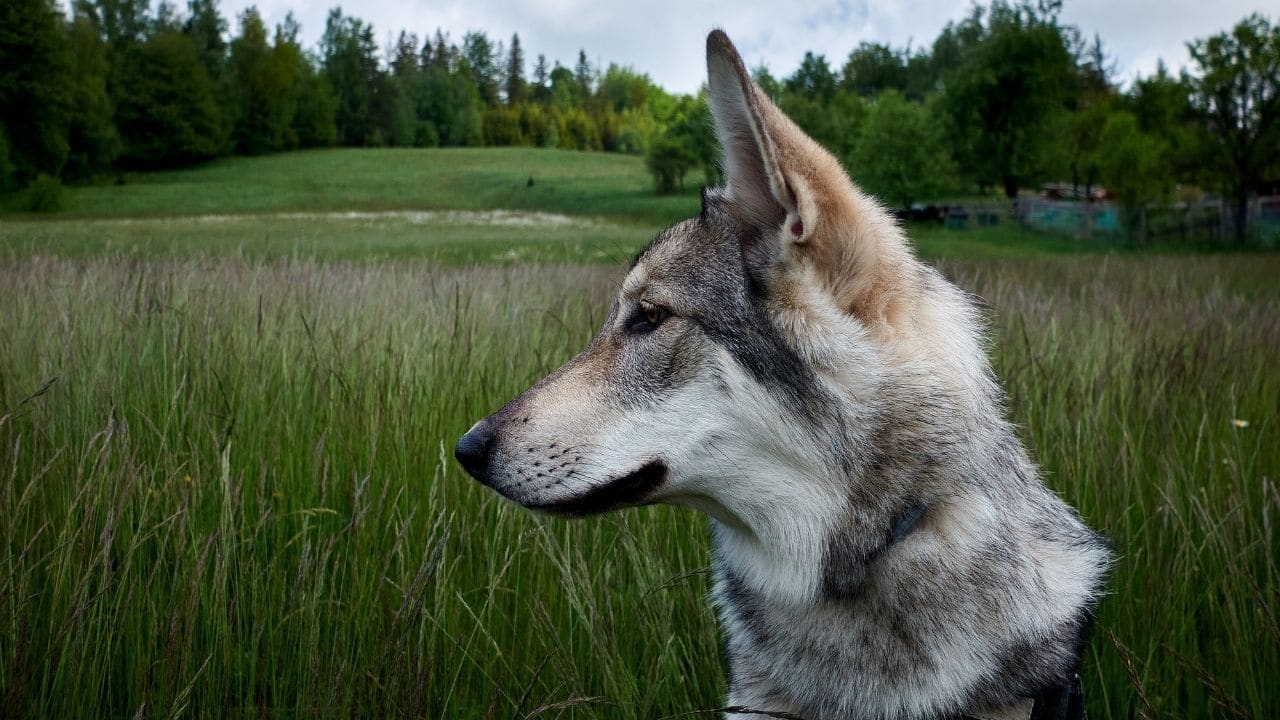
Since we all know that dogs are the domesticated versions of wolves, is it possible to crossbreed them and produce a wolf hybrid?
Well, if you’re still wondering, a Dutch breeder in the early 1900s already made this into a reality.
Wishing to produce an excellent police dog breed, Leendert Saarloos crossbred a Siberian wolf with a German Shepherd.
Hence, the birth of the Saarloos Wolfdog breed.
But, while the Saarloos Wolfdog is a dog-wolf hybrid, its appearance is much closer to the wolf.
Yet, unlike wolves, a saarloos wolfdog is still highly-trainable if you use the right strategies.
Also, since they’re generally wolf hybrids, it’s not a surprise that they have a wolf’s keen senses and pack mentality.
With that said, these dogs still have a strong prey drive in them. Thus, Saarloos Wolfdogs aren’t suitable companions for homes with small children and animals.
Since they also retained a wolf’s pack mentality, they prefer to have a canine companion with them.
If not, then your Saarloos Wolfdog may have bouts of separation anxiety whenever you’re not with them.
Though they can tend to be clingy to their human companions, they’re typically loyal to them.
But, don’t expect them to valiantly defend their hoomans as they prefer to avoid any close combat at all costs.
Thus, fur parents who wish to take care of this dog breed need to have patience in building their confidence through training.
Regardless of their clinginess and stranger aloofness, Saarloos Wolfdogs generally are a good fit if you lead an active life.
Add the low-maintenance wolfish coat they have, you’ll spend more time bonding outdoors than visiting the salon for grooming trips.
5. Canadian Eskimo Dog
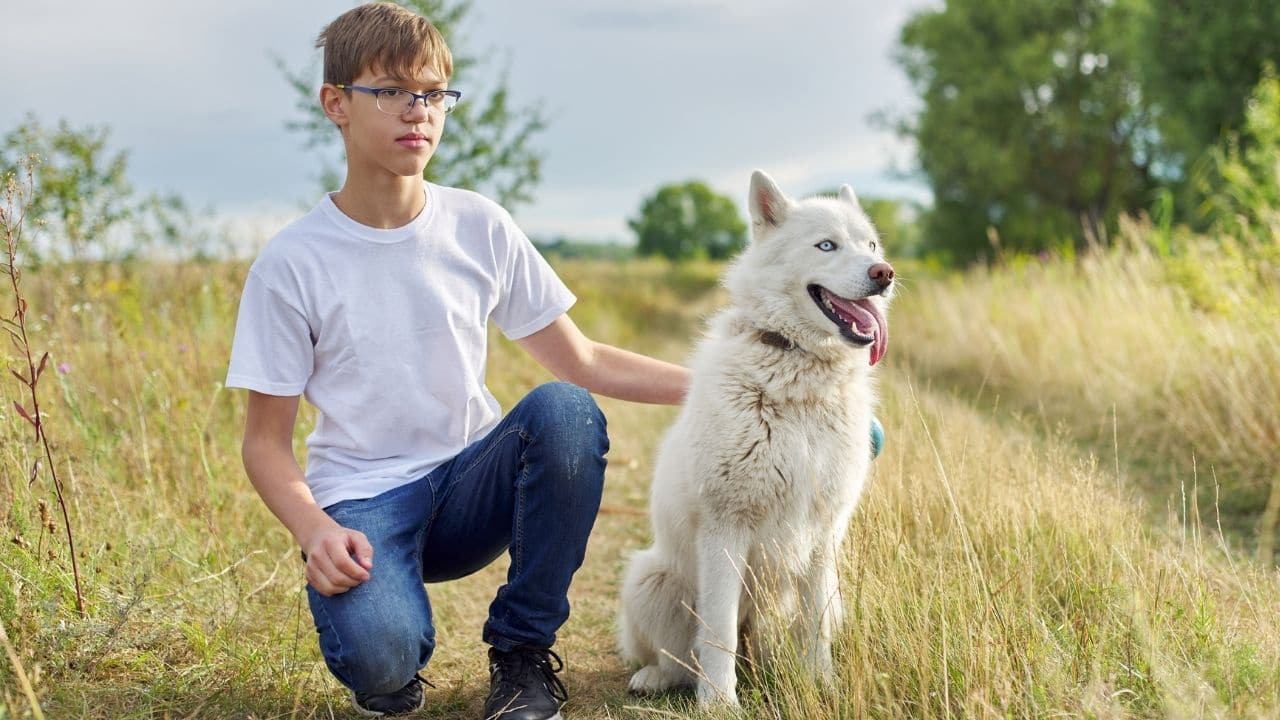
Otherwise known as Canadian Inuit Dog, this dog breed is native to Canada. Sadly though, less than 400 Canadian Eskimo Dogs are around since the invention of snowmobiles.
Regardless of their declining number, a dedicated dog breeder went out of his way to save the Canadian Eskimo Dog.
Thought of as one of the many wolf hybrids, Canadian Eskimo Dogs also pull sleds like the Siberian Husky.
Canadian Eskimo Dogs are even crossbred with Alaskan Malamutes or Siberian Huskies to maintain their line. It’s even thought that this dog breed has been used in developing the Northern Inuit breed.
Regardless of their origin, their thick undercoat and long topcoat allow them to survive harsh weather conditions.
Just don’t make them perform the same level of physical activity in warmer weather. Chances are they’ll experience heat exhaustion, which can lead to heat stroke if not taken care of.
Like their Husky friends, Canadian Inuit Dogs love the great outdoors as well. You’ll even need to schedule at least a two-hour-long daily exercise routine to keep these canines happy.
If possible, engage these pups in activities that require running. Whether you do sled-racing, jogging, etc., they won’t mind so long as they can release their pent-up energy.
Despite their robust appearance, Canadian Eskimo Dogs are surprisingly affectionate and playful. And, like Huskies, they’re pretty vocal as well.
But, just like typical sled dogs, Canadian Eskimo Dogs also have a strong prey drive. Hence, you’ll have to hold back on taking in one if you have small animals and children in the house.
6. Tamaskan
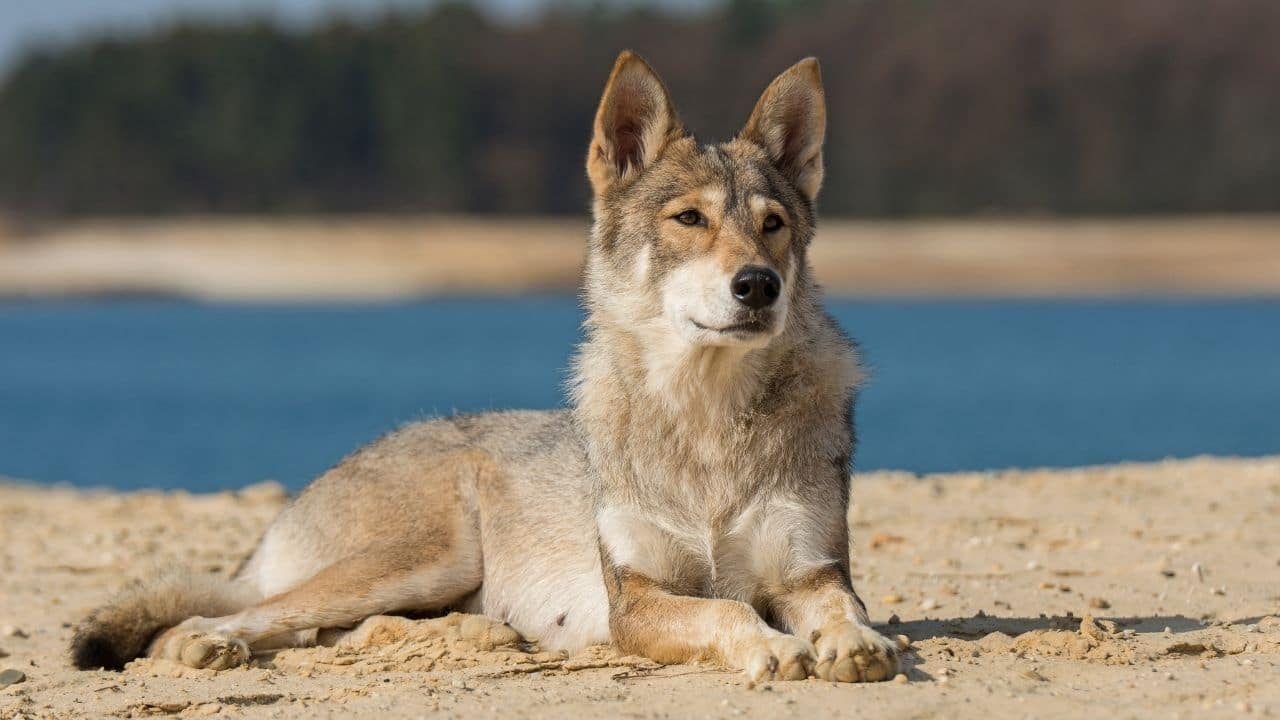
Another Husky-like doggo that you should watch out for is the tamaskan dog.
Fondly called Tams, this dog breed is a crossbreed of Alaskan Malamutes, German Shepherds, and Siberian Huskies.
While it sounds odd, dog breeders developed this breed to produce wolf-like canines with a tamed temperament.
And, it looks like this breed line’s a success as the Tams exhibit such behaviors as breeders want them to have. They’re generally sweet, intelligent, and have extreme loyalty.
But, unlike the Husky, the Tamaskan Dogs rarely show aggression to show their allegiance. Hence, they’re good companions for children and other dogs as well.
Since they rarely become aggressive, you might think twice about owning one if you want a guard dog.
However, as any wolf hybrid out there, they still have high energy levels. Thus, it’s best to engage these Tams in high-impact activities that’ll keep them occupied and happy.
Otherwise, you’ll find a lot of holes in your yard as they’re known diggers if left to boredom.
Also, like the Huskies, you’ll need to exercise extreme patience when dealing with Tamaskans as they’re also stubborn.
You might even need an expert dog trainer to teach them obedience-related stuff.
7. American Eskimo Dog
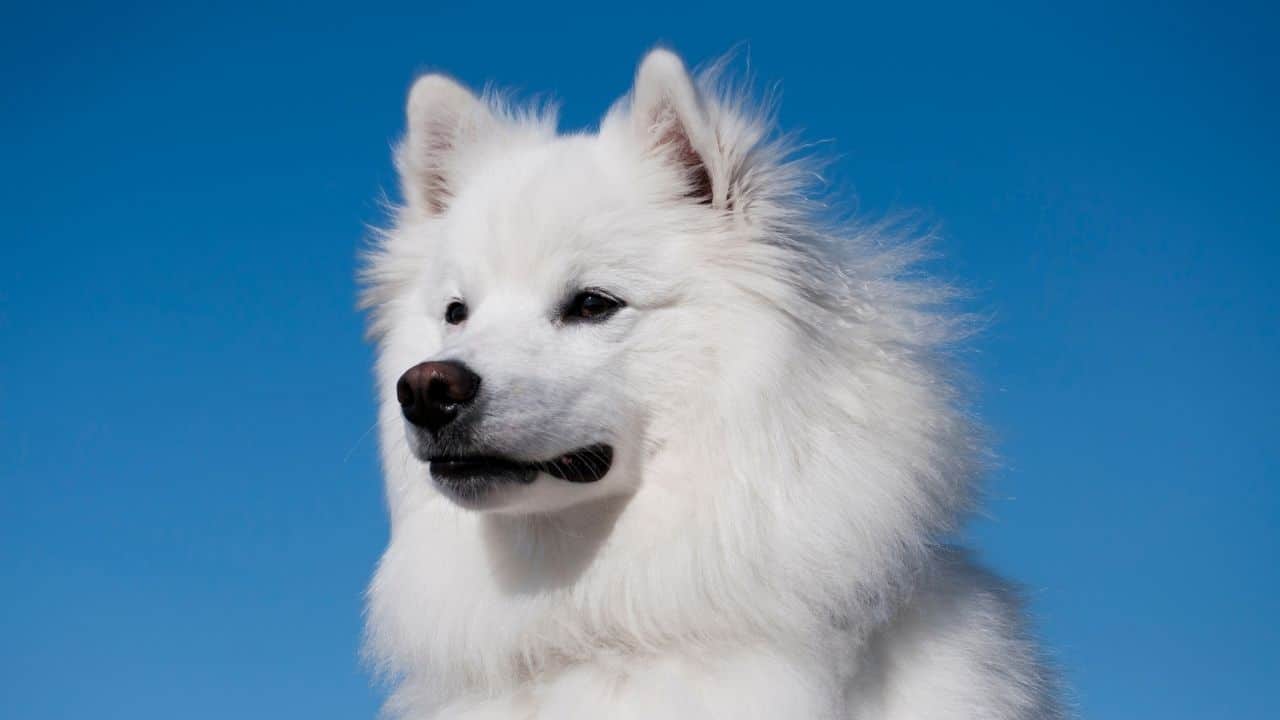
If you love everything white, then the american eskimo dog is an excellent fit to match your personality.
Covered in a dense, white coat with lion-like ruff by their chest and shoulder areas, American Eskimo Dogs look like lions.
Yet, unlike their siberian husky counterparts, American Eskimo Dogs come in three sizes – toy, miniature, and standard.
Despite their relatively small stature, Eskies are fun to be with. Generally more social than other husky-like canines, this dog breed loves being with people all the time.
Eskies are also highly-trainable given the intelligent nature of their ancestors. Yet, American Eskimo dogs are highly vocal as they’re witty – perhaps on par with the siberian husky.
Thus, it’s always a clever idea to keep them occupied all the time. Undertraining and neglecting them will ultimately lead to a yard in disarray.
Hence, you need to engage these pups in outdoorsy, physical activities.
Since they’re big extroverts, they’re good companions for young family members.
Just ensure to watch them closely – they’ll likely become irked when the play gets a little rough.
8. Icelandic Sheepdog
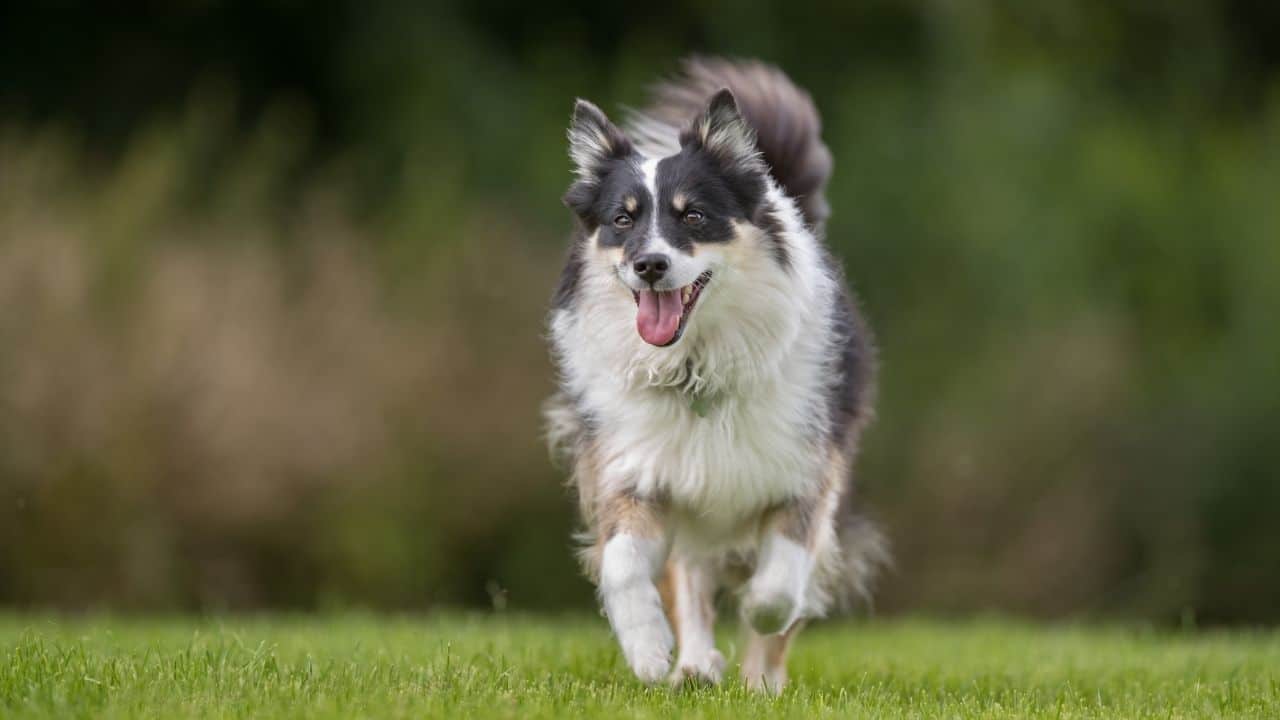
Perhaps one of the rarer dog breeds out there, the Icelandic Sheepdog is a purebred native of Iceland.
Otherwise known as Icelandic Spitz or Icelandic Dog, this breed’s believed to have been brought by the Vikings when they settled in the country.
Since the icelandic sheepdog lives in a cold-climate country, it’s expected that they have a thick coat as a shield against the cold.
However, unlike their husky counterparts, Icelandic Dogs weren’t used for sled-pulling activities.
In fact, these canines were used as herding dogs, valiantly protecting sheep, horses, and cattle from predators – including birds of prey.
Hence, if you happen to spot these loveable canines watching the sky and yapping at birds, don’t be baffled.
It’s just their centuries-long habit kicking in that’s making them do all this stuff.
But, as the Icelandic Sheepdog’s used to protecting the herd, it’s only suitable to provide them mentally-stimulating activities. If not, then you’re risking your home to become a carnage later on.
Other than that, these canines love to play and be affectionate with their fur family, especially children. They’re highly-trainable as well if you consistently and patiently teach them.
However, no matter how well-trained Icelandic Sheepdogs are, they still tend to become very vocal.
This is especially true when spotting suspicious items in the area. Icelandic Sheepdogs also tend to lunge at birds even if they don’t do anything to rile the pup.
But, not to worry. As mentioned earlier, these traits come from centuries-deep habits embedded in their very nature.
Hence, give them plenty of love and exercise, and they’ll be one of the perfect family pets you’ll ever have.
9. Swedish Vallhund
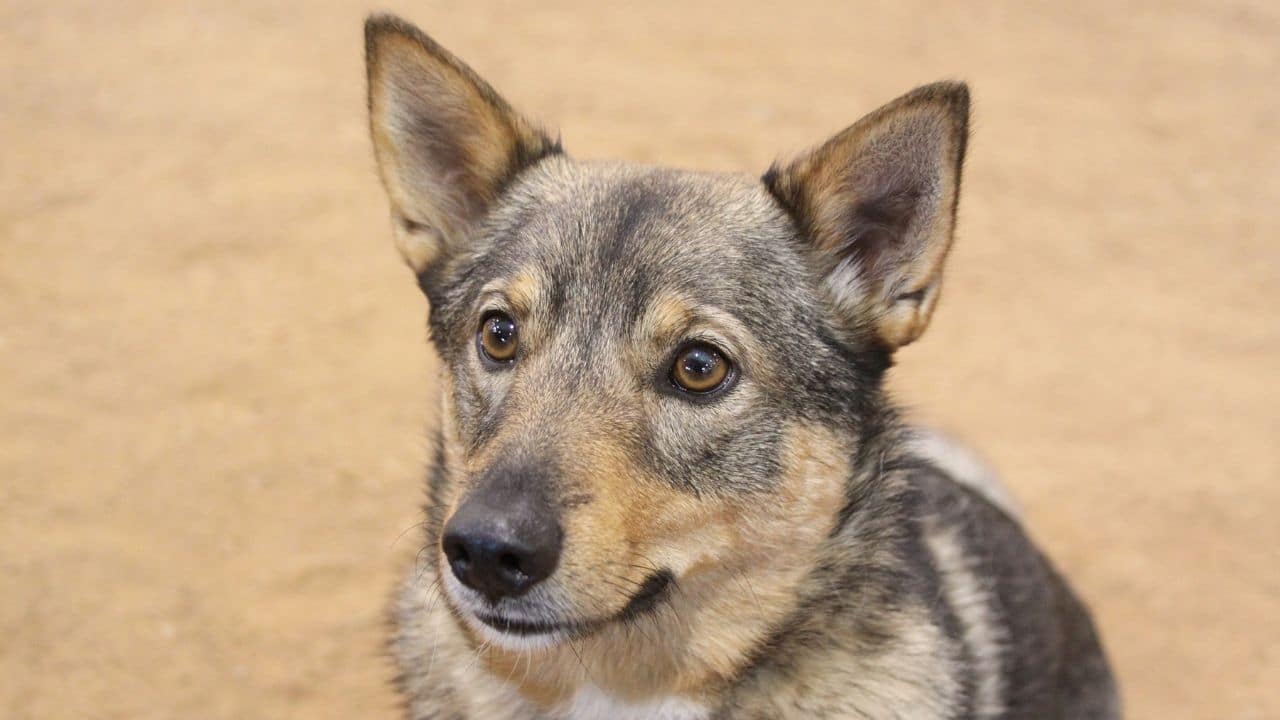
Another Husky look-alike in the canine department is the Swedish Vallhund.
As part of the working dog breeds, the swedish vallhund is a common sight to behold in farms back in Sweden.
What’s more, this dog’s name translates to “shepherd” or “herding.” Hence, it’s no wonder that this canine’s adept at keeping the flock safe from potential predators.
Thus, modern-day Swedish Vallhunds tend to bark a lot at almost everything they find in your home.
Considering their farm dog heritage, these dogs won’t like staying in one nook all the time.
With that said, it’s a good idea to keep these pups entertained by engaging them in physical activities.
From hiking trips to afternoon strolls, there’s nothing a Swedish Vallhund will miss for the world.
But, what makes these energetic dogs a good companion is their innate friendliness.
Whether you’re a new acquaintance or a loved family member, Swedish Vallhunds will welcome every attention, as well as treats, with open paws.
Just make sure that you shower them with love and lots of activity. There’s no single day in your life that you’ll describe as dull by then.
10. Akita Inu
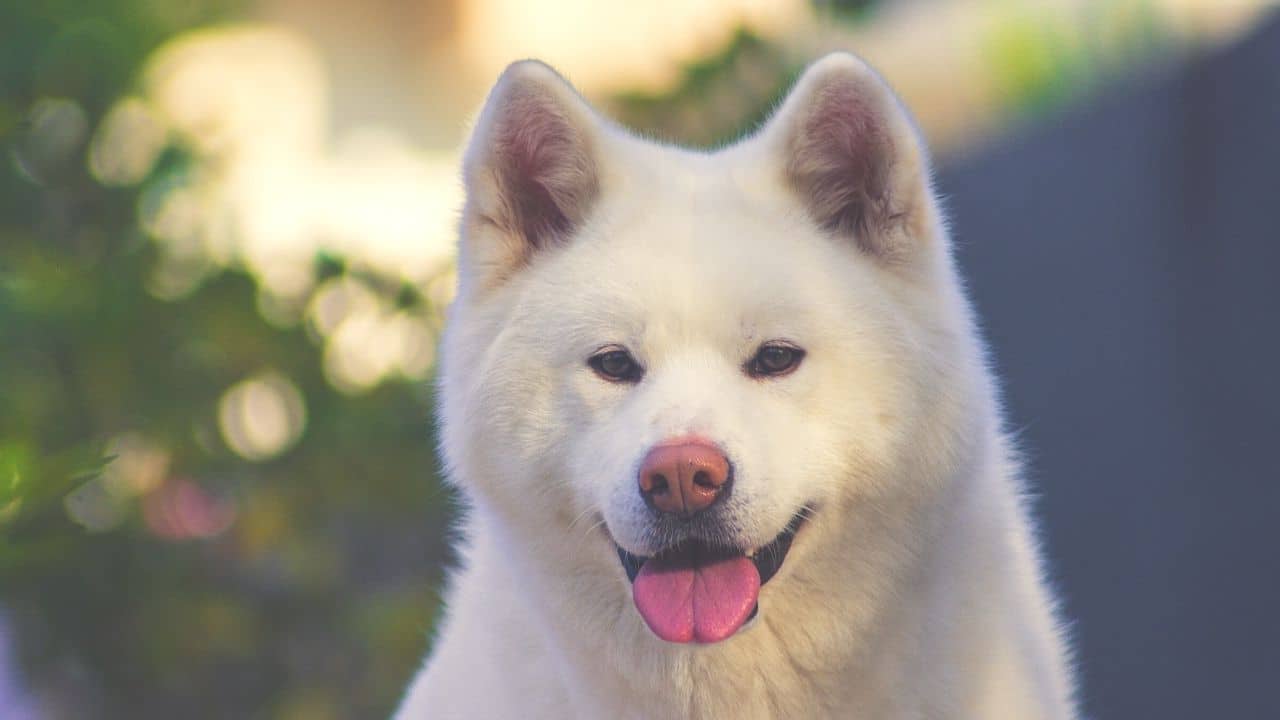
If you’ve ever visited Japan, you’d be pretty surprised to find a large breed of dogs that you can easily mistake for as a Husky.
Originating from Japan’s mountainous regions, the Akita Inu is another pup you’ll consider just with their looks alone.
Otherwise known as the Japanese Akita, these canines, unfortunately, aren’t fit for every dog lover out there.
Unlike the friendly yet mischievous Siberian Husky, one can say that an akita inu is more of the aloof type.
Perhaps, this personality of theirs stems from their original role as the royal and noble family protectors in the country.
They also have a strong pack leader mentality, making them intimidating to the newbie fur parent.
But, if you’re experienced enough in training strong-headed dogs like the akita inu, then you’re in for a treat.
Just make sure that you socialize them early on so they’ll get used to interacting with people of different personalities.
However, unlike other Husky look-alikes, Akita Inus tend to require more grooming than usual. Aside from their frequent shedding, these canines drool a lot.
Hence, you’ll need to bring cloth or paper towels to clean their adorable faces up.
But, if you don’t mind occasionally cleaning up after them, then Akita Inu’s the one for you.
11. Northern Inuit
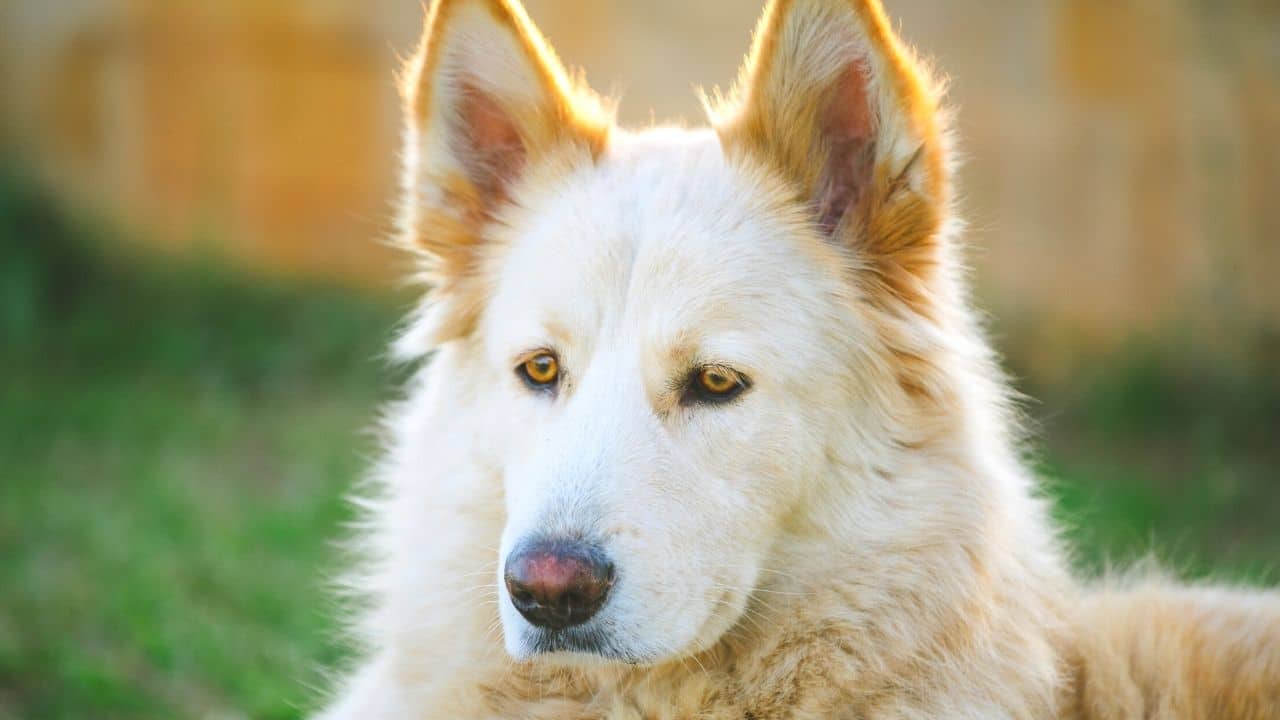
Another new breed of intelligent dogs hailing from the United Kingdom is the Northern Inuit. Though this breed resembles wolves, they don’t have any trace of wolf DNA in them.
However, the northern inuit is thought to be a mix of four dog breeds.
Namely, these are Siberian Huskies, German Shepherds, Alaskan Malamutes, and some Inuit breeds.
Hence, it’s no wonder that their fur has the same coloring as these canine breeds.
Like Huskies, Northern Inuits can be very stubborn at times. Though they’re friends with everyone, sometimes they want to get things done on their terms.
Despite this stubborn nature of theirs, a northern inuit dog loves the company of humans.
If you leave them alone in the house for hours without stimulating activities, they’ll experience separation anxiety.
If this separation anxiety gets the best of them, these canines will dig holes anywhere in your home. Thus, make sure to give them lots of exercises to avoid running into these problems.
Other than that, they’re pretty much good companions for the whole family.
Just keep a watchful eye if they interact with kids as they can easily knock them with their gigantic build.
12. Finnish Spitz
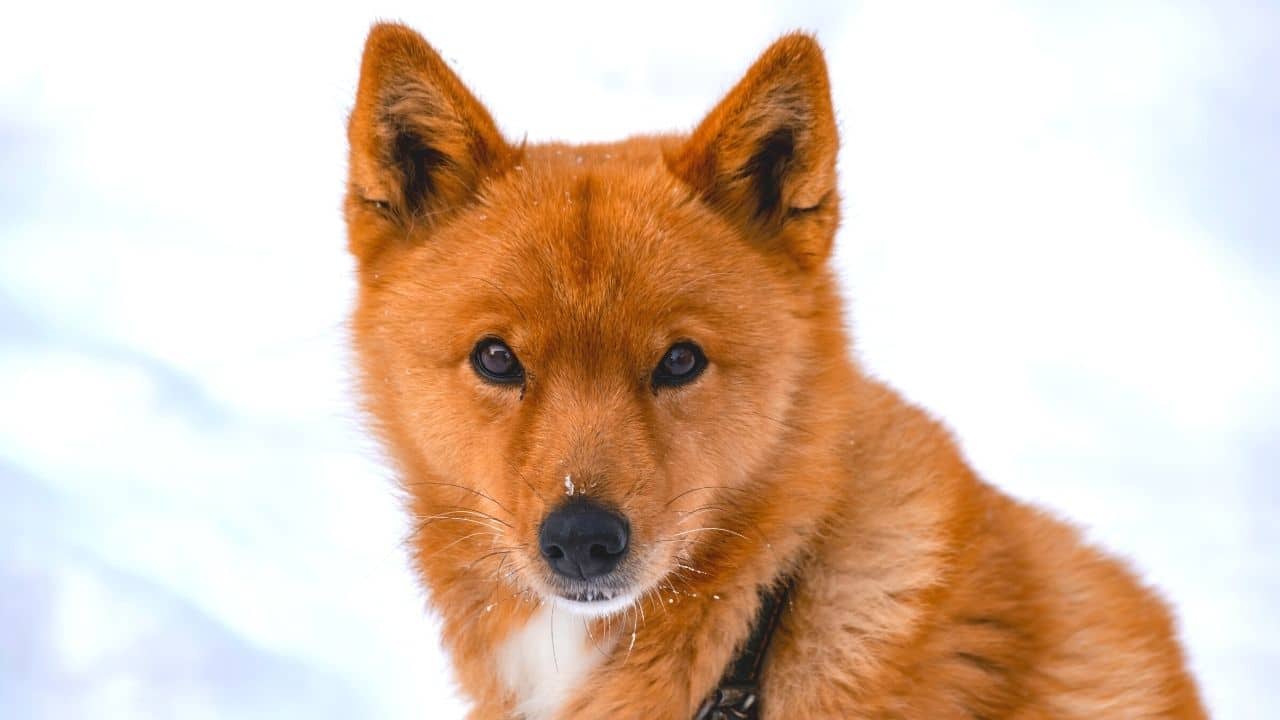
Hailing from Finland, the Finnish Spitz is another dog breed that resembles the Huskies.
But, what makes them distinct from other Husky look-alikes is their close resemblance to the fox.
But, don’t underestimate the finnish spitz. Since they’re bred and trained to hunt, they love to bark all the time.
The moment they spot small animals scurrying across the forest floor, they yap immediately for their owners to locate them.
Thus, it’s no wonder they’re known as “bark pointers.”
With that said, don’t be surprised if they tend to talk a lot! It’s just their barker pointer nature kicking in.
The Finnish Spitz are also highly energetic canines that love to move around a lot. Generally, they love being around children and other pets.
In fact, Finnish Spitzes tend to become late bloomers in the mental maturity department.
Up until their third or fourth year of life, these pups remain silly and playful.
But, don’t be too complacent. They tend to become aggressive to strangers.
Hence, always keep a watchful eye on them during socialization trips.
13. Czechoslovakian Wolfdog
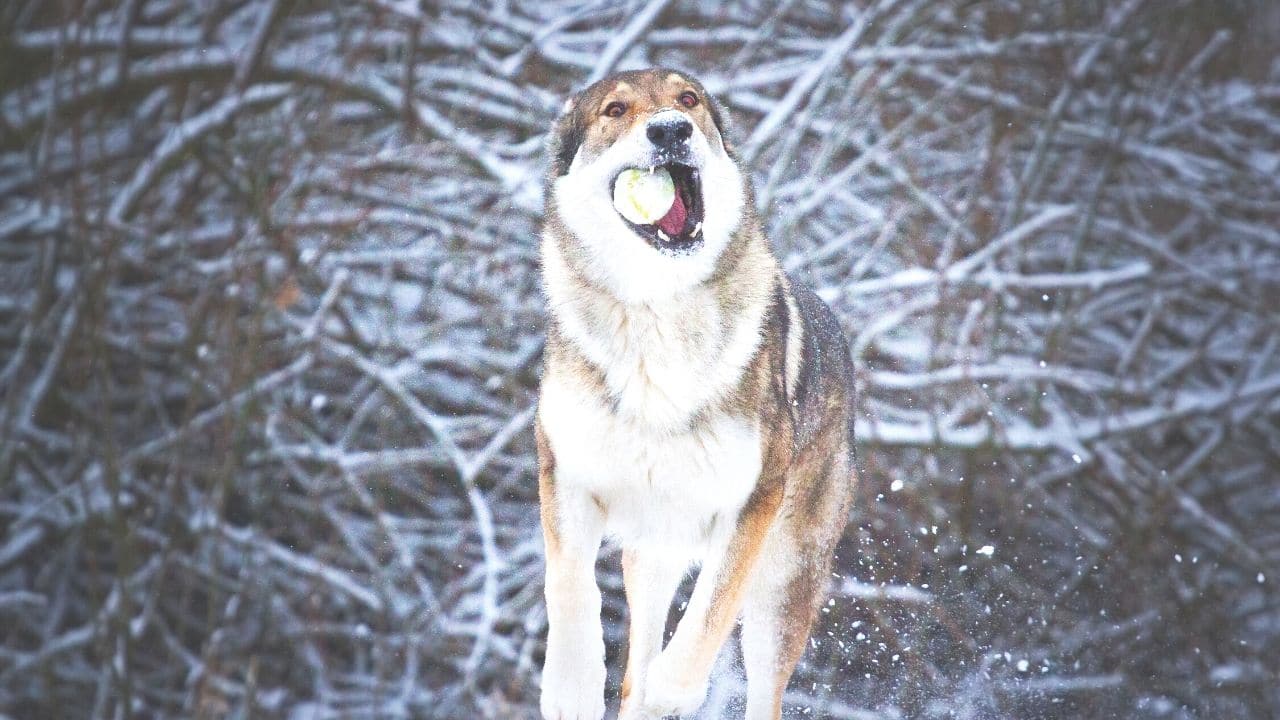
Another rare but newer breed of dog that can be mistaken for a Husky is the Czechoslovakian wolfdog.
Though they don’t have the long lineage that other canine breeds boast of, their attractive coat and amber eyes make them resemble a wolf.
Why is this so?
Well, breeders want to develop a new dog breed with the wolf’s stamina and the temperament and intelligence of the German Shepherd.
Hence, you’ll notice that their coat color, eyes, and ears very much resemble the famous wild animal they’re supposed to look like.
Regardless of their appearance, Czechoslovakian Wolfdogs build strong social bonds with their family. They love to mingle and play with them.
But, when they suspect that danger’s lurking nearby, they transform into a fierce doggo, willing to attack if there’s a need.
While such traits are admirable, this dog breed isn’t for the fainthearted.
Since they also possess a strong pack mentality, you have to establish your authority over them.
If not, then you’ll have trouble making them obey your commands.
14. Native American Indian Dog (NAID)
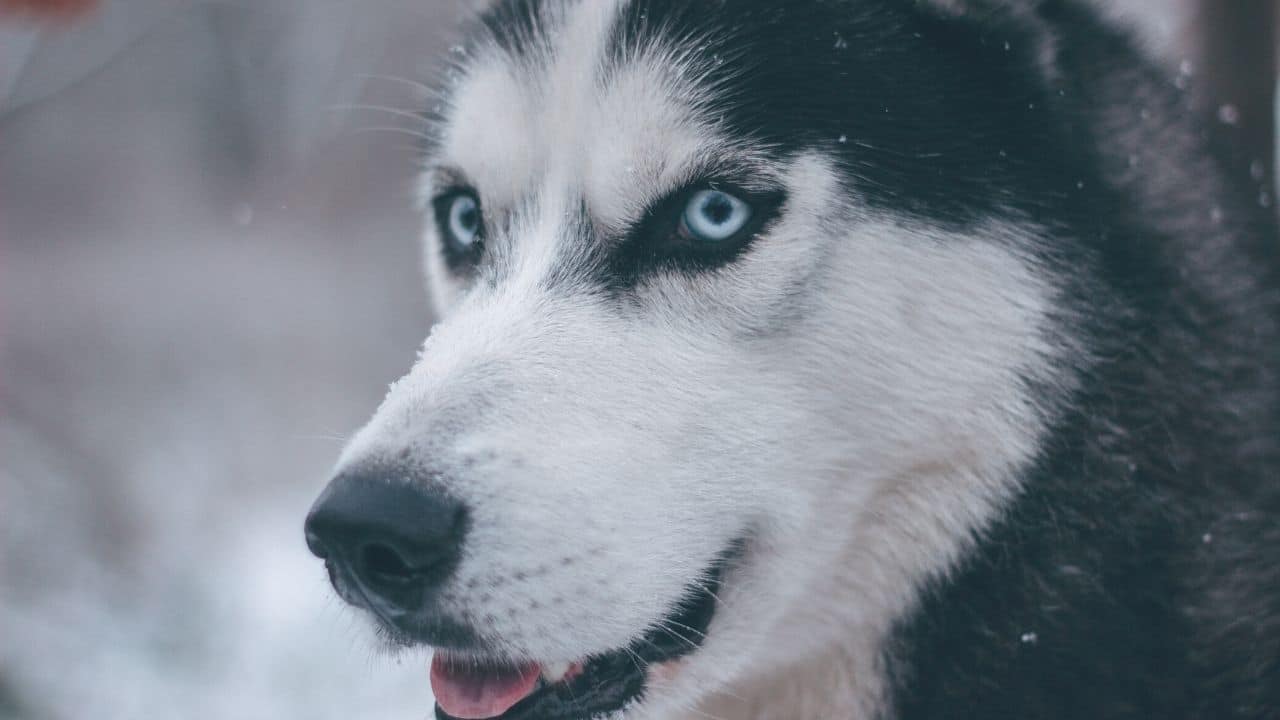
Last but definitely not least in this slate of Husky look-alikes is the Native American Indian Dog.
Though NAIDs don’t ring a bell as other dog breeds, they are also one of the oldest lineages of canines walking on earth.
Even if their breed history’s typically unknown, it’s undeniable how much these canines resemble wolves a lot.
Despite this, the NAIDs are pretty much friendly. They love playing games with their fur family. If given the right amount of love and care, NAIDs become your family’s fiercest protector from danger.
Thus, if you’re looking for a loyal and active dog to become part of your family, then the Native American Indian Dog’s one of your best bets.
With all these Husky-look alikes you’ve come to know of now, have you chosen which one to adopt?
Are you ready now to take one of them under your wing?
These canines can’t promise you to be the most obedient canines you’ll ever have.
But, their spunky personalities and love for adventure’s enough to make you want to cling to them forever.
So, what are you waiting for? Visit your local dog shelters. Perhaps, you’ll be lucky enough to encounter one of these canine breeds.
Remember, you don’t need to spend a fortune to take home these Husky look-alikes and have a friend for life.

